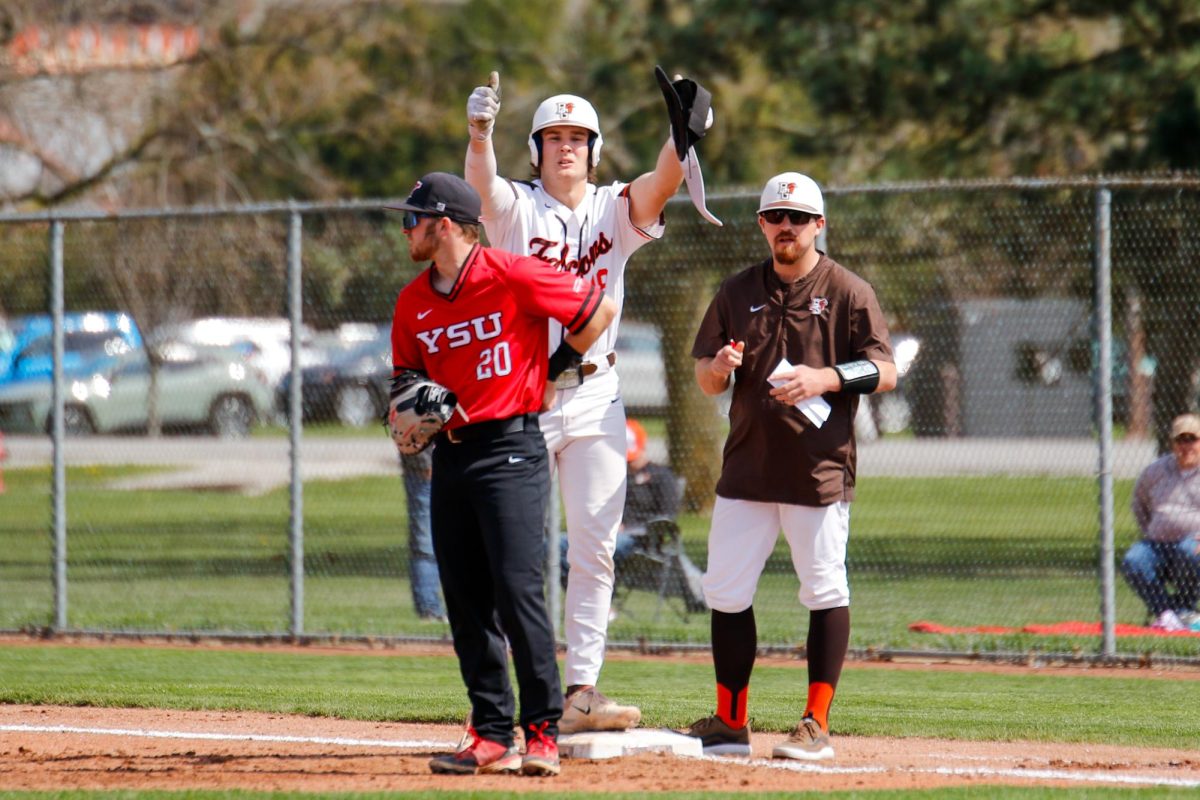When the Student Recreation Center opened Jan. 2, 1979, it was the first facility in the nation devoted to general student recreation with no additional fees for students. Few sports facilities existed at the time, and those that did were more traditional intramural facilities.
“We’re very proud of this facility because indeed it was the model for practically every recreation center that has been built since 1979,” said Richard Bowers, assistant vice president and director of recreational sports, “[Then] this kind of facility just did not exist.”
The building originally cost $9.35 million and took two years to build, and one of the major draws was the Olympic-size Cooper Pool. While the building has seen many changes throughout the years, it still draws a record number of people each year.
Last year there was a record 515,000 visitors in the building with 70 percent of the student body using the facility once a week, according to Teri Sharp, director of media relations in the department of Marketing ‘ Communications.
Additionally, as of July of this year the recreation center has seen over 9 million visitors in its 25 year history, according to Brady Gaskins, assistant director of recreational sports.
In 1974, students began to express interest in a student recreation facility. At the time there was only a natatorium and gymnasium in the Eppler complex and the courts in Memorial Hall. While the University saw such an increase in enrollment throughout the 1960s and 1970s, these facilities did little to accommodate the student body, and were used primarily for team sports. From April to May in 1975, over half of the 15,000 students signed a petition to help pay for a recreation center. A $29 quarterly fee was instilled for the next 15 years for students, faculty and staff to help finance construction of the recreation center.
The infamous blizzard of 1978 delayed progress on the building. In addition, there was controversy over the indoor running track. Some desired a 220 yard track, but compromised with a suspended 190 yard track, the larger of which was not feasible with the set budget. A $400,000 budget was used to supply the center with equipment such as kayaks, cross country skis and toboggans.
The first All-Nighter, titled “Winter Night Delight,” was held in 1979 which included 50 non-competitive tournaments and activities. Events included a horse contest, dog show, movies and a bubble gum blowing contest.
The original facilities included an archery studio with targets, and golf driving nets and golf room. In the 1990s this was turned into a free weights room. According to Bowers, prior to this the only free weight facilities were scattered across campus in the residence halls.
The mezzanine (upstairs) floor of the building was originally a passive recreation area with games such as pinball, bumper pool and fooseball. As students’ interests changed, the 1980s brought the replacement of this area with stationary bikes and other cardiovascular and weight training equipment.
Activities that attracted students to the recreation center in the past included ping pong tournaments and indoor Frisbee. In the original facility, Andrews Pool was surrounded by live trees and green carpet. In addition, the vending machines in the facility were stocked with healthy snacks such as yogurt and juice, opposed to the typical soft drinks and chips.
Other past events and programs at the recreation center include “Tipover for Hemophilia,” an annual statewide domino competition that was held to raise money for hemophilia.
Also in the early 1980s, the center’s staff noticed a significant decline in use of the facility during the afternoon hours. The “Soapercise” program was then started so that students could work out while watching their favorite soap opera.
In 1986, the Fitwell Center was established to test cholesterol, blood pressure and other areas of physical fitness.
In November, news spread nationwide when Cooper Pool was closed briefly after swim team members complained of hair loss. The pool was later reopened after researchers concluded the hair loss was due to excessive exposure to chlorine.
During the winter of 1988, the recreation center drew enormous crowds. Attendance was up 23 percent compared to the prior year. Aerobics classes during this time drew record crowds of 150 to 200 people per class.
The winter of 1988 also brought about the completion of the pace trail behind the center. The 1/3 mile track was originally lined with lights to measure the distance ran. The University was the first in Ohio to have a lighted trail. It originally had pace lights along the trail to monitor runners’ distance but according to Bowers, they became a maintenance problem and were eventually eliminated.
In 1989, the center celebrated its 10th anniversary with the revealing of a commemorative plaque to honor all past, present and future University students as well as to honor the original student recreation center planning committee members. This plaque is still on display in the main entrance area of the building.
The Fit-for-Hire program was started in 1990, where graduating seniors can be tested and receive a physical fitness certificate for their resumes.
Changes during the1990s included, the installation of an outdoor sand volleyball court, and new carpeting for the facility in 1999.
Interestingly, in October 1994, roof materials above Cooper Pool ignited when a heating wire caught fire and the building had to be evacuated.
The summer of 2001 brought about one of the biggest changes to the recreation center, the $2.3 million project to install air-conditioning. Prior to this the center had been periodically shut down because of the intense summer heat. Air-conditioning was part of the original design of the center, but was scrapped due to cost.
As always, equipment is constantly being replaced and updated to suit student’s needs. According to Bowers, there were no treadmills in the building 10 years ago. But now they’re a popular machine, and usually log 5,000 miles a month per machine during the school year, he said.
Gaskins agrees that many of the changes in programs and equipment are fueled by students’ demands and new trends.
This month the recreation center is holding a month-long celebration for its 25th anniversary. Events are planned daily through the month according to Gaskins. Activities include “Try it Tuesdays” where students and staff are encouraged to try out new programs and classes.
“It’s designed to expose students to activities that aren’t typically thought of at the Rec,” Gaskins said. There will be weekly trivia contests and weekends focused mostly on family activities.
The main focus of the month will be an open house to be held Homecoming weekend. Photos and displays showing the progression and growth of the recreation center over the last 25 years will also be shown. The center will host the Alumni Association’s 5K Run/Walk and following it will have a reception for alumni, primarily former student employees at the recreation center, Bowers said.
The most recent updates to the center include a new welcome center at the entrance, and changes in the pro-shop. A recreation management and security system will be put in soon where members will swipe ID cards to enter the building and monitor demographics of who uses the facility. This system is expected to be completed in January.
“People come into this building and can’t believe that it’s 25-years-old because its maintained so well,” Bowers said. “We have a great deal of pride in it and our student employees are a wonderful asset as well.”
The Center of Archival Collections was used in writing this article as well as past Key yearbooks. In addition, records kept by the Office of Marketing and Communications were used.















